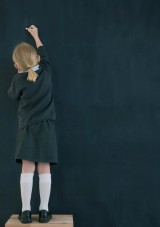Sharing responsibility for teaching and assessment isn't drug-addled pedagogy from the '60s, says Paul Dix...
Classroom assessment that is personalised and differentiated is not an impossible dream! Yet with so many students passing through the hands of the average class teacher, truly personalised learning cannot be the sole responsibility of the adults; it must be shared with the children. Train your pupils to differentiate for themselves while creating a simple coding for your schemes of work, and you can satisfy both students and inspectors.
Years of bland, government-prescribed teaching methods have resulted in children expecting to be given the objectives, to be told what they are going to learn. We serve platters of WALT and WILT followed by an unsatisfying ‘plenary’ for dessert, but prescriptive teaching does not engage or empower – it leaves children unsatisfied, yet not really hungry for more.
To truly personalise learning and assessment, it has to be internalised. The idea that children can take control of their own learning isn’t new – Socrates used rich questioning to develop children’s thinking and learning over 2500 years ago. He wanted his students to take control and teachers to stand back and choose the right time to help. He wasn’t interested in objectives, setting or streaming, but in drawing out understanding from individuals. True personalisation of learning comes when children have a part in it themselves. Genuinely productive assessment demands the same balance of teacher input and children’s contributions.
The fine differentiation that children need at the task level is easy to extract on a one to one basis, but with a class of 30+, children have to take some responsibility. And when children are shown how to deconstruct the model, select their own success criteria and record their own progress, their assessment becomes more personal, relevant and motivating. They sense the control.
 The common vision of Victorian classrooms is of one teacher leading from the front, delivering to 40 or more ‘empty vessels’ eager to be filled with ‘teacher knowledge’. In truth the organisation of teaching and learning was more personalised and echoes the push for mixed aged teaching and tutor groups we’re experiencing now.
The common vision of Victorian classrooms is of one teacher leading from the front, delivering to 40 or more ‘empty vessels’ eager to be filled with ‘teacher knowledge’. In truth the organisation of teaching and learning was more personalised and echoes the push for mixed aged teaching and tutor groups we’re experiencing now.
It was unrealistic for large class sizes to receive enough individual attention from one teacher, so teachers would often instruct the older students on the lesson and send them off with a small blackboard of ideas to teach small groups of younger students. As the older students taught, the teacher toured the groups, monitoring the teaching and assessing the learning.
Things are not so different today. Class sizes are still inflated and teachers still struggle to give individual students enough attention. Yet asking students to lead teaching and giving responsibility to students for assessing others has been spun as pedagogy that was born in the 1960s by drugaddled liberal teachers who were ‘dangerously child-centred’. In fact, teaching through students is pragmatic rather than political. It’s an efficient and sensible use of resources, allows more individual attention and dispels the myth of the teacher as the only one who is able to teach.
With so much involvement in formative assessment it makes sense that pupils should contribute to their own summative report. When students are in control of their own assessment and learning they have all the information needed to create their own termly or annual reports.
Ask the students to write their own individual class report with evidence to back up the statements. Post levels on the wall with student-created criteria and target statements, and allow the children to tell you which level they’re on and what they’re working towards. Tell them that if you agree with their comments, and they have strong evidence, then you will use their comments as part of your reports. Each report will be evidence-based, negotiated with students and their involvement will save you time.
Many schools have distanced the reporting system from the children. In particular, the use of ‘statement banks’ to create summative reports flies in the face of efforts to individualise the process. Levels – which make little to sense to parents or employers – have replaced grades, and comments are generated by teachers with no input from students, resulting in reports so impersonal that all that has been changed is the name of the child. The pleasure of dusting off an old school report to show your children is ruined by such generic guff.
Enabling children to take as much responsibility as possible for their own learning and critical thinking is proven to work whatever directions successive governments take. Send your pupils to secondary school with high level skills in personalised assessment and you have set them up as learners for life.
 Practical tips for personalising and differentiating assessment…
Practical tips for personalising and differentiating assessment…
• From criteria lists created by the children ask them to select one criterion they can achieve, one that is a stretch and one that seems a real challenge.
• List all the pupil generated success criteria. As children achieve each one, place their initials alongside. Agree a target with the children.
• All pupils have a notebook with lists of criteria, in their own language, for each subject. As a plenary to each lesson, the lists are added to, ideas swapped, key terminology noted and targets refined.
• Ask children starting your class to prepare a personal CV cataloging their achievements to date. Encourage them to use photos, examples of work, certificates etc. As part of termly or annual reviews of work, use them as a scrapbook to file ideas, targets, thoughts, memories. Passing on the CVs at secondary transfer gives the new form tutor a good sense of the personal and academic interests and achievements of the individual.
• Ask the children to create icons that represent the targets that they’re working on or to show the criteria they have chosen. The icons are discrete and personal. The children can have them out on the desk and they’re not easily read by classmates. Experiment with bookmarks with icons listed, Velcro strips with symbols to stick on and sets of laminated icons that children can adopt for certain activities.
Use this key in your planning to identify and balance your differentiation…
• D.B.G. – Differentiation by Group (splitting the class up into groups of similar ability)
• D.B.R. – Differentiation by Role (students are given a role/responsibility within a group that reflects their ability)
• D.B.T. – Differentiation by Task (students are given a task that reflects their ability)
• D.B.O. – Differentiation by Outcome (students are given a target for the task that reflects their ability – i.e. all pupils will have…, most pupils will have…, and some pupils will have…)
• D.B.T.I. – Differentiation by Teacher Intervention (the teacher/LSA gives guidance to students requiring more assistance). This is not mentioned every time it could be used.
• D.B.Q. – Differentiation by Questioning (the teacher asks more leading, complex questions of the more able)
• D.B.Re – Differentiation by Resource (the teacher prepares additional resources to stretch the most able and support the least)
• D.B.F. – Differentiation by Follow up (students are directed towards appropriate extension materials and media; marking includes target to reach the next level)
• D.B.M. – Differentiation by Media (the teacher uses or guides students to use a range of different media to engage in the activity)
You can get a 20% discount on Paul Dix’s new ook, The Essential guide to Classroom Assessment, by ordering via http://www.pearsonbooks. com/PaulDix
The side effects of teaching music
Ace-Music
